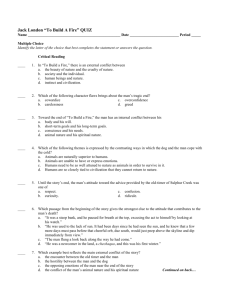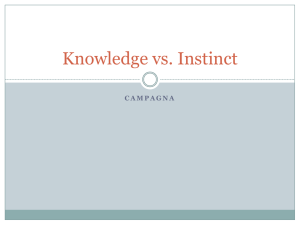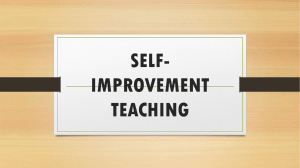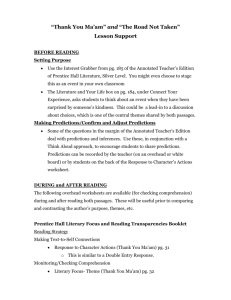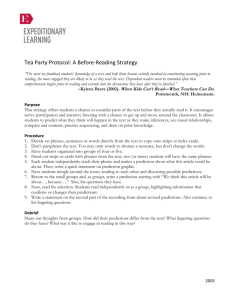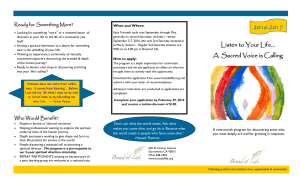"To Build a Fire" Quiz: Critical Reading Comprehension
advertisement
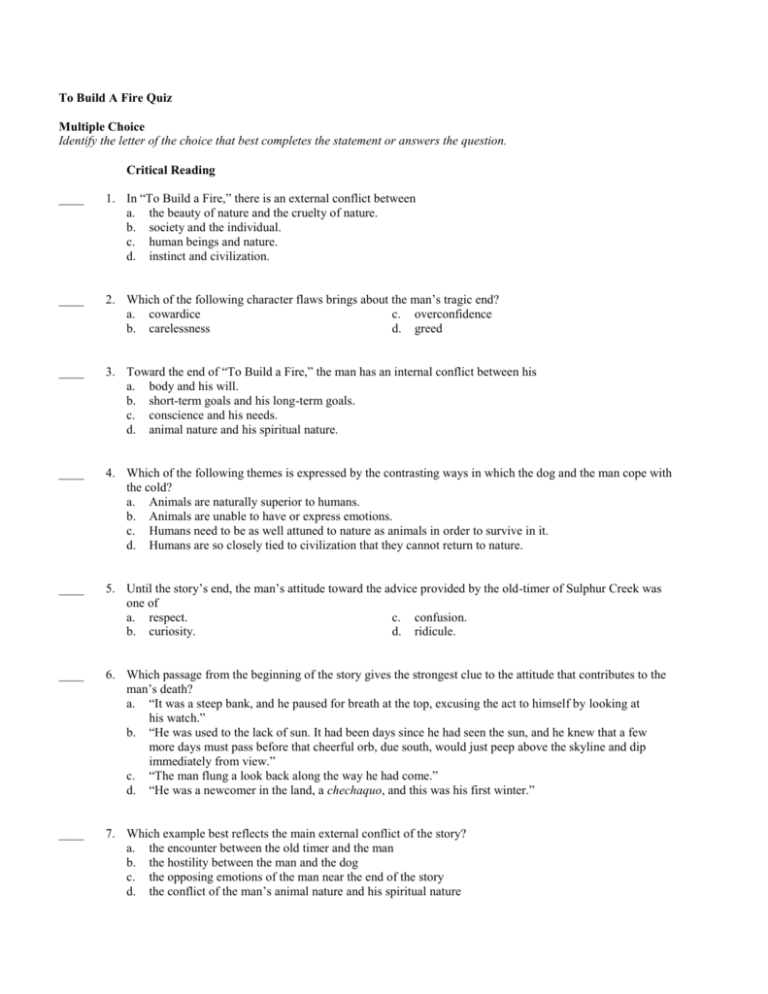
To Build A Fire Quiz Multiple Choice Identify the letter of the choice that best completes the statement or answers the question. Critical Reading ____ 1. In “To Build a Fire,” there is an external conflict between a. the beauty of nature and the cruelty of nature. b. society and the individual. c. human beings and nature. d. instinct and civilization. ____ 2. Which of the following character flaws brings about the man’s tragic end? a. cowardice c. overconfidence b. carelessness d. greed ____ 3. Toward the end of “To Build a Fire,” the man has an internal conflict between his a. body and his will. b. short-term goals and his long-term goals. c. conscience and his needs. d. animal nature and his spiritual nature. ____ 4. Which of the following themes is expressed by the contrasting ways in which the dog and the man cope with the cold? a. Animals are naturally superior to humans. b. Animals are unable to have or express emotions. c. Humans need to be as well attuned to nature as animals in order to survive in it. d. Humans are so closely tied to civilization that they cannot return to nature. ____ 5. Until the story’s end, the man’s attitude toward the advice provided by the old-timer of Sulphur Creek was one of a. respect. c. confusion. b. curiosity. d. ridicule. ____ 6. Which passage from the beginning of the story gives the strongest clue to the attitude that contributes to the man’s death? a. “It was a steep bank, and he paused for breath at the top, excusing the act to himself by looking at his watch.” b. “He was used to the lack of sun. It had been days since he had seen the sun, and he knew that a few more days must pass before that cheerful orb, due south, would just peep above the skyline and dip immediately from view.” c. “The man flung a look back along the way he had come.” d. “He was a newcomer in the land, a chechaquo, and this was his first winter.” ____ 7. Which example best reflects the main external conflict of the story? a. the encounter between the old timer and the man b. the hostility between the man and the dog c. the opposing emotions of the man near the end of the story d. the conflict of the man’s animal nature and his spiritual nature ____ 8. What is the central idea of “To Build a Fire”? a. People choose their own destinies. b. Nature is more powerful than humans. c. In nature humans live by instinct. d. Heed the advice of the experienced. ____ 9. Which internal conflict does the man experience toward the end of the story? a. terror versus faith c. sorrow versus stoicism b. reality versus hope d. regret versus rage ____ 10. In “To Build a Fire,” London’s attitude toward the Alaskan wilderness can best be described as a. nostalgic. c. apprehensive. b. respectful d. affectionate. ____ 11. During the course of the story, the man changes from a. being haughty to being helpless. c. b. being rational to being spiritual. d. being heartless to being caring. being courageous to being fearful. ____ 12. Which of the following clues is most likely to lead a reader to predict that the man will make it to camp? a. “For the moment, the cold of space was outwitted.” b. “He had forgotten to build a fire and thaw out.” c. “He was pleased at the speed he had made. If he kept it up, he would certainly be with the boys by six.” d. “Once in a while the thought reiterated itself that it was very cold and that he had never experienced such cold.” ____ 13. Which of following is the correct way to predict while reading a story? a. Don’t try to correct your first prediction, but just read on quickly to the end of the story. b. Start making predictions about the end of the story about halfway through it. c. Check your predictions as you read, and revise them if necessary. d. Avoid using your own experience when making predictions about your reading.

